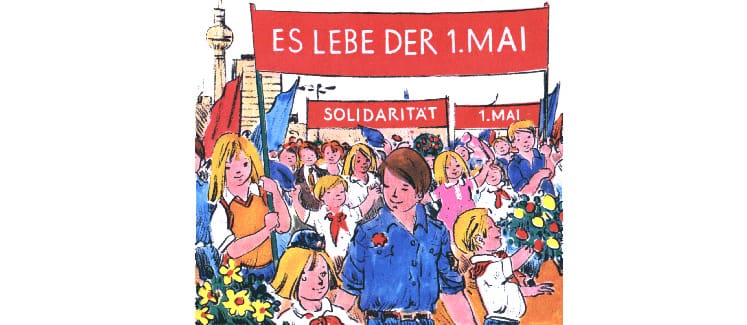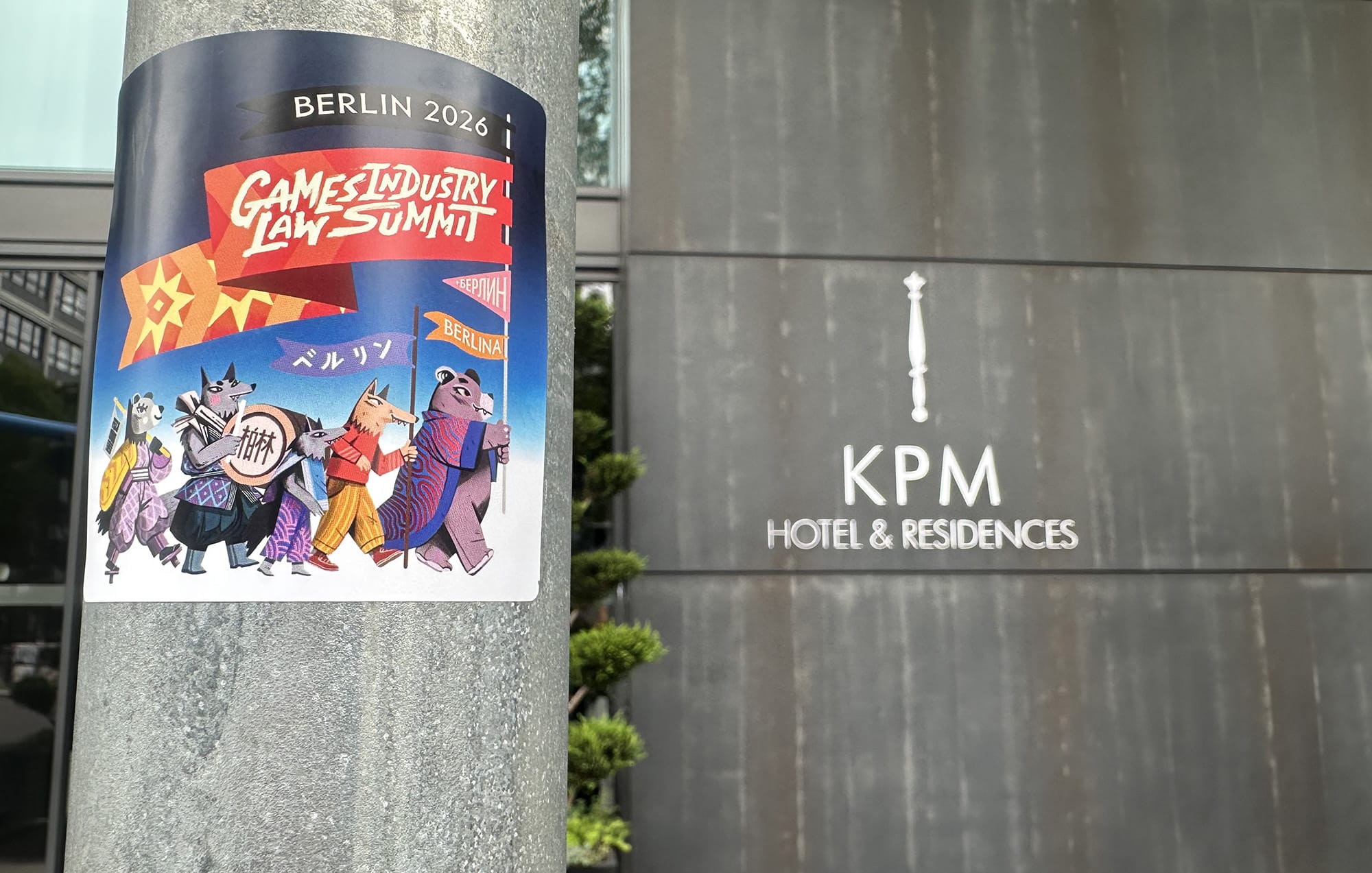Summit XI: The Making Of

In the last few years, we commission a new piece of key art for each of the editions of the Summit – to reflect its mood and theme.
Here's how we arrived at the cover of Summit XI, scheduled to run in Berlin in June 2026 – which you will see on the bags, on the notebooks, on the pins, and of course, on the stage.
🎶 Bonus point: for the first time, we also created a jingle for this edition of the conference. You will find it below.
The Concept
In 2026, the Summit moves away from Vilnius after 10 years in the same city (we aim to become more accessible and more inclusive for our international community) – thus we wanted an art that shows "a community on the move".
Since its inception, the symbol of the Summit has been the wolf; the 2026 edition will run in Berlin – a city that has a bear as its symbol – thus we wanted a cover that has both the wolf and the bear.
Finally, we wanted to highlight that our community is a diverse group of people: from Shanghai to Santiago, and from Cape Town to Copenhagen – thus we wanted something that's full of colors.
As before, we decided to work with the French-Canadian artist Aurélia Folch over at Bandit Bandit, and the first thing she did was sharing a link to the works of the talented Lisbon-based artist Hannah Abbo, to define the mood. In particular, this illustration of a folk-inspired street parade had a great vibe –

The First Draft
What we wanted to see, was a similar kind of a street parade, but with a more Asian look and feel, to reflect the growing importanCe of China, Japan, Singapore and Korea in the international games industry.
To underline the diverse crowd that we have, we asked to include the flags that would carry Berlin's name in a number of different languages:
the main, big flag could say “BERLIN 2026"? then under the art we would spell Games Industry Law Summit. "BERLIN 2026" will be the main message.
and maybe we could incorporate nods to other languages in the visual, e.g. one of the drums may have 柏林 painted on it, and ony the Chinese speakers will notice; we can also have ベルリン somewhere, and again, unless you read katakana, you may think it’s a decorative element; same for Korean, 베를린. funny enough, Spanish uses Berlina, and Italian – Berlino. if you see a way for this, let's do it?
This is the very first draft that we arrived at:

Further Development
Following the first draft, we wanted to see the colors come to life. And one of the associations I wanted to pursue while doing this, was the link to the celebration of May 1st in Berlin – the Labour Day (of the working class, if we go back to the times of DDR):

Luckily for us, the red and white title of the Summit was a match for the red and white flags of May 1st. Here's what we had at the next step:

We've lost one of the characters (a funny small wolf that was second-left), due to space considerations. Overall, things were moving in the right direction.
There were a few things that we wanted to fix:
- The wolf with the drum had its hand in the way of 柏林 written on the drum, we wanted to move it back to get better readability (thanks to Yue Lu's feedback);
- The Korean writing got some criticism, and we procured a better reference (thanks to Brian Chung and his assistant's excellent writing skills);
- Having Berlin (EN/DE), Berlino (IT) and Berlina (ES) next to each other wasn't much of a diversity, so we tried Greek (looks cool – Βερολίνο – but the flavor gets lost when it's all caps, ΒΕΡΟΛΊΝΟ; just one character hints at this being in a different language) and settled on Russian (БЕРЛИН) – there's close to 4 million Russian-speaking people in Germany at this time (from a dozen of different countries), with over 300.000 in Berlin alone, so it's a fitting reference;
- Finally, I couldn't help but notice that the yellow and the red flags match the colors of the German national flag 🇩🇪 – so I asked to change the top flag from purple to black, to see if this kind of a hint would be perceptible.
And this is what we had after all these edits:

It was high time to start working on the lettering.
The Lettering
To finish the logo – the writing on the flags – we returned to our good old friend Natasha Efimova, a Russian artist who's passionate lettering (and yoga).
We wanted the flags that would fit both a street demonstration in Berlin and a village parade in Gifu, and this is what she sketched for us –

A week later, we had the final lettering for the non-Asian languages:

The Background
We loved the art, we loved the logo...

What we wanted to explore next, was the background. As the event happens in June, we went for the blue gradient:

The Printed Version
We locked the file for use in the digital space, and – following the Summit in Vilnius – undertook a test printing with our notebook manufacturer.
The reproduction of the gradient on items such as notebooks and attendee bags posed a challenge, and we tried a number of different blues.
Here's what it came down to:

In the end, we opted for the version on the right – you will see it at the actual event. As the KPM crew noted, "it's a good match to the summer sky of Berlin".
🎶 The Jingle
In the games that my micro-studio develops on the side, music plays a big role – and we're lucky to have a close working relationship with Anna Fruit, a brilliant Russian composer who's operating at the edge of the modern music (Anna's based in Barcelona in the last few years, and works with studios all over the world).
As the Summit in Berlin will run at KPM's big yard, we felt that just ringing a bell may not be enough to get everyone to come back to the session space after the coffee break. What we dreamed of was to have Summit XI's very own jingle, a short tune that reflects the cover art and works to mobilize the attention of the attendees.
The main theme – the parade, with the drums – was a given.
As to the style of music... we looked at a bunch of street parades in Japan, and decided that we need to have the characters sing "Berlin" in the Japanese (Japanized?) spelling there, ベルリン ("be-ru-ri-n, oh be-ru-ri-n").
Ladies and gentlemen, please meet the first-ever official jingle of the Summit, which you will hear as the call for the start of each session in Berlin next June:
What's Next?

The registration for Summit XI remains open, with 125 seats placed as of now. If you plan to attend and would like to stay right at the venue (KPM has 170 rooms) – you need to talk to Alma, who will connect you with the reservations department (and they will offer special event rates). At this time, 50% of KPM is already booked.
The second option is the B&B Hotel next door (a very generic name, I know – but it's a big and modern hotel with good ratings, and it's literally 200 meters down the street from KPM):

With the launch of the 9th season of Legal Challenge out of the way, I'm now back to working on the program for Berlin, where we have such topics as "Killing Games", "Compliance vs Player-Centric Approach" and "Dealing with Leaks", among others (UGC, too).
If you have a good pitch for a cross-country session that is relevant to both in-house and law firm people, let's talk!
As I was typing this, Vanessa Lerner and I were discussing the recent events in the German-Brazilian relations on the phone (uff...! 🙈), and she had a brilliant idea for a panel that seems relevant to most of our audience: identifying the global regulatory and enforcement trends that appear in multiple jurisdictions, based on the 2025/2026 experience. Inshallah, the board approves this pitch, and you will see it on the program in June.
With the very best wishes,
your friend and colleague who, after all, is not going to become a Berliner
(porque un otra ciudad me llama ☀️)
// Señor de la Klimov at CO|SFBD
